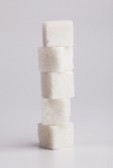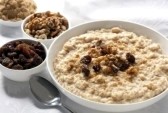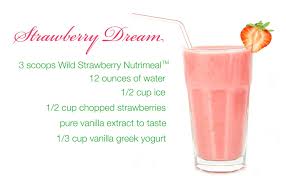The post GI – how low can you go? appeared first on Usana Health Sciences Organization.
]]> |
| Ravinder Lilly Writer and Dietitian |
Low GI eating is on everyone’s lips at the moment – but it’s not on everyone’s menu and that’s a problem. Choosing more low GI carbohydrates has so many health benefits. For example, it helps you to say fuller for longer which is important. In Australia and New Zealand, over 60 per cent of adults are overweight or obese. And, this is triggering chronic (long term) conditions such as heart disease and diabetes.
Part of this, say experts, is due to our natural liking for sweet foods. In evolutionary terms, sweet fruits meant they were ripe and ready to eat. But today, they are absolutely everywhere. And too much sugar actually stresses the body. Here’s how…
Our liking for sugar and fat is so strong that one recent study suggested that sugary foods and drinks could be as addictive as nicotine in cigarettes. Researchers from Boston Children’s Hospital in the United States found that both nicotine and high GI foods and drinks (such as cakes, pastries and sugary drinks) can stimulate the same brain receptors in a similar way to addictive substances.
Highly processed carbohydrates seem to light up the regions of the brain that areinvolved in reward and cravings. And, because they can also make you feel hungry (which happens when your blood glucose levels sink), they are one contributor to the worldwide obesity epidemic.
 |
| Are you a slave to the crave? |
So, going back to nature and choosing more low GI, less processed carbohydrates can help overcome sugar cravings and help to avoid overating for those who battle with being overweight or obese.
But that doesn’t mean that carbs are a dirty word. Your body and your brain relies on the fuel and its preferred source is glucose – a tiny sugar molecule. But it’s all about how your body receives this vital fuel.
Because carbohydrates are one of the first things your body breaks down and because they already contain glucose units (either linked together in large complex units i.e. low GI carbs) or processed (small, sweet-tasting high GI carbs) they are the biggest influencers of your blood glucose levels.
Let’s talk GI
This difference in effect on blood sugar levels is the basis of the Glycemic Index, or GI. GI rates foods based on how much they raise blood glucose and carbohydrate foods are given a GI ranking ranging from zero to 100. So:
• Low GI = 55 and under (these are the best choice)
• Medium GI = 56-69 (choose these in preference to high GI foods and drinks)
• High GI = 70 and above (try to limit how much of these you consume).
 |
| Porridge is a great low GI food |
Choosing low GI foods most of the time and fewer high GI foods/drinks is linked with a lower risk of developing both type 2 diabetes and heart disease.
Essentially, low GI carbohydrates (large and complex and made up of many glucose molecules joined together with the fibre intact) are the body’s preferred source of fuel. High GI carbohydrates (the sugary kinds) are much smaller molecules – you could say that they’re pre-digested, and tiny enough to taste sweet. They rapidly enter the blood stream.
Too many of these are related to long-term conditions including weight problems and even type 2 diabetes. We don’t yet know whether this is linked with overall lower blood glucose levels or related to reduced spikes in blood glucose levels. But what we do know, is that when glucose levels increase dramatically, the rate of chemical reactions your body has to undergo surges rapidly, too. The result is the production of free radicals called reactive oxygen species (ROS); these can damage body cells and DNA. Choosing more low GI foods means that less of these damaging oxygen free radicals are produced with less potential cell damage.
How high GIs how it affects your body
After downing a sugary treat, your body experiences a rush of glucose. But, because your body wants to keep blood glucose levels to within narrow limits (very high and very low blood glucose levels can damage and destroy body cells), it releases the hormone insulin.
 |
| Sugary foods and drinks cause your blood glucose to yo yo |
It’s insulin’s job to encourage the cells to take in glucose and normalise the level of glucose in blood. But if too much is released, the rebounding low blood glucose levels sends you running for the nearest sweet treat, trapping you in a sugar trap that can trigger weight gain, mood problems and more.
Insulin boosts the storage of glucose in the cells, but it also encourages your fat cells to take in fats. Simply put, your body won’t break down and use your fat stores when there’s a lot of insulin around.
Low GI is better for weight watchers
 |
| Watching your weight? Watch your GI too! |
When you want to watch your weight – especially winter weight gain which creeps up without you knowing – it’s important to think about how what you eat affects your insulin levels. Because insulin encourages your body to store fat, having high levels of insulin in your bloodstream over the long-term can actually trigger more body fat. And that includes if you’re eating fewer calories overall.
Enter Nutrimeal…
So low GI is king. And, choosing low GI foods for breakfast especially when combined with protein and fibre is ideal. This combo is especially important in the morning when you break your overnight fast.
Again, it’s down not the way your body handles insulin. Levels of insulin tend to be low in the early morning but once you’re awake, your body ramps up insulin secretion to metabolise the glucose released by your body to help you get going.
Some studies have shown that GI values actually change over the day. So, when different foods were tested for the GI value, scientists found that the same food eaten later in the day prompted a lower glucose response. So a high protein, low GI breakfast is especially important.
Boiled eggs with wholegrain toast or porridge with skimmed or low-fat, calcium-enriched soya milk or toast with peanut butter are good choices. And so is a Nutrimeal .
.
 |
| Nutrimeal: have it your way! |
With all of the nutrients – protein, healthy fat and low GI carbohydrates that you’d expect from a healthy meal, it takes just a few minutes to mix up in a blender bottle. If you have a little more time to spare, blend it with some frozen berries for a tasty, nutrient-packed meal in a glass. Or, pour into a leak proof water bottle and enjoy when you can.
Replace two meals a day and you’re on your way!
Because Nutrimeal is strictly portion and calories controlled, replaced two meals per day with Nutrimeal can help you to lose weight – as long as your third meal is a healthy, calories controlled one!
And, it’s not a short-term fix – long-term follow up studies show that meal replacements like Nutrimeal may actually help people stay within their new lower weight range.
Comes in Wild Strawberry and Dutch Chocolate varieties. French Vanilla Nutrimeal is gluten free.
To prepare Nutrimeal, add three scoops to 290–340 ml of cold water to taste. Blend or shake. Contains: soybean, milk and wheat. Produced on equipment that also processes peanuts, tree nuts, eggs, sesame, and shellfish.
The post GI – how low can you go? appeared first on Usana Health Sciences Organization.
]]>